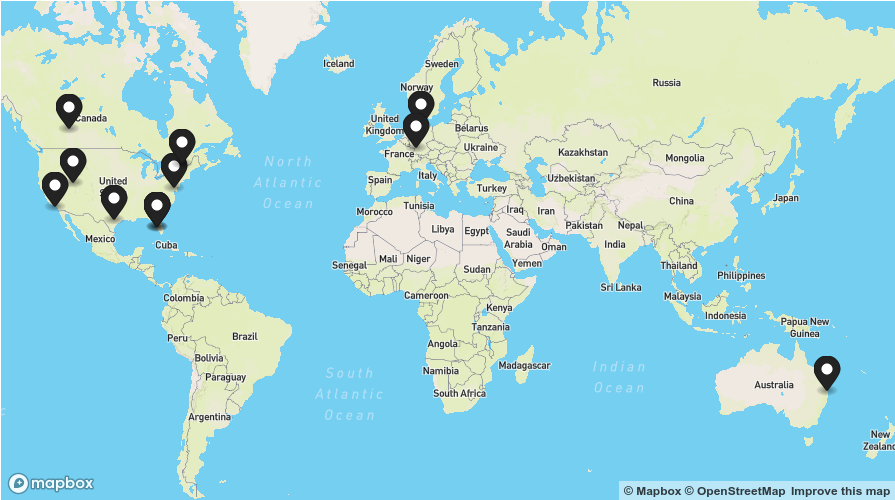This week in MathOnco 217
Adaptive therapy, t-SNE, treatment holidays, stochasticity, math onco lab groups
“This week in Mathematical Oncology” — July 7, 2022
> mathematical-oncology.org
From the editor:
Today is a big day: we are launching “lab group” feature pages on the mathematical oncology website. If you’d like your group featured on the website, please read Saskia Haupt’s announcement below for more information.
Enjoy,
Jeffrey West
jeffrey.west@moffitt.org
"Your assumptions are your windows on the world. Scrub them off every once in a while, or the light won't come in."
- I. Asimov
Mistic: An open-source multiplexed image t-SNE viewer
Sandhya Prabhakaran, Chandler Gatenbee, Mark Robertson-Tessi, Jeffrey West, Amer A. Beg, Jhanelle Gray, Scott Antonia, Robert A. Gatenby, Alexander R.A. Anderson
Uncovering potential interventions for pancreatic cancer patients via mathematical modeling
Daniel Plaugher, Boris Aguilar, David MurrugarraIdentifying optimal adaptive therapeutic schedules for prostate cancer through combining mathematical modeling and dynamic optimization
Ruiyang Liu, Shun Wang, Xuewen Tan, Xiufen ZouCancerCellTracker: a brightfield time-lapse microscopy framework for cancer drug sensitivity estimation
Qibing Jiang, Praneeth Sudalagunta, Maria C Silva, Rafael R Canevarolo, …, Mark B Meads, Kenneth H Shain, Ariosto S Silva, Wei ZhangLongitudinal dynamics of clonal hematopoiesis identifies gene-specific fitness effects
Neil A. Robertson, Eric Latorre-Crespo, Maria Terradas-Terradas, Jorge Lemos-Portela, …, Ian J. Deary, Linus J. Schumacher, Kristina Kirschner, Tamir ChandraPerspectives on training quantitative systems pharmacologists
Tongli Zhang, Carolyn R. Cho, Peter L. BonateGrowth-rate model predicts in vivo tumor response from in vitro data
Rocky Diegmiller, Laurent Salphati, Bruno Alicke, Timothy R. Wilson, Thomas J. Stout, Marc Hafner
The U.S. academic job market survives the SARS-CoV-2 global pandemic
Ariangela J Kozik, Ada Hagan, Nafisa M Jadavji, Christopher T Smith, Amanda HaageHow GNNs Facilitate CNNs in Mining Geometric Information from Large-Scale Medical Images
Yiqing Shen, Bingxin Zhou, Xinye Xiong, Ruitian Gao, Yu Guang WangBlood-based liquid biopsies for prostate cancer: clinical opportunities and challenges
Blanca Trujillo, Anjui Wu, Daniel Wetterskog, Gerhardt AttardDrug dependence in cancer is exploitable by optimally constructed treatment holidays
Jeff Maltas, Katherine R. Singleton, Kris C Wood, Kevin B WoodStochastic Population Dynamics of Cancer Stemness and Adaptive Response to Therapies
Paras Jain, Atchuta Srinivas Duddu, Mohit Kumar JollyTowards a minimal admissible model of solid tumour spheroid growth
Benjamin J. Walker, Giulia L. Celora, Alain Goriely, Derek E. Moulton, Helen M. Byrne
MathOnco Research Group Highlights
Saskia Haupt: We have launched a new feature for the MathOnco website: MathOnco Research Group Highlights. In this section of the website, we provide a worldwide overview of MathOnco research groups, that can be searched by keywords and geographic location. To read more on what is possible, read our recent blog post. Current authors of a Mathematical Oncology blog post are eligible to submit their group page. If you're not already an author, you may submit a post for consideration at the same time as submitting your group information. We hope this will maximize discussion between math oncology groups worldwide. If you‘d like to have your own group featured, please prepare the following information:group name
website of your group
group location
keywords describing your group’s research (including if it's theoretical/experimental/both)
small description of your group
Optionally, you can provide:
Twitter handle of your group
group logo
group photo / group picture / research summary figure
Please send all information to Saskia Haupt. If there are any further questions, please do not hesitate to contact Saskia directly. We're looking forward to a huge collection of all the MathOnco research going on in the world! Thank you all for supporting our community efforts!
Long-term quantitation and modeling of cell dynamical responses to in vitro chemotherapy schedules
The Mathematical Oncology Blog
Tyler Jost & Amy Brock: “Here we developed a methodology to systematically investigate in-vitro drug schedules and quantified the results using mathematical modeling. This was accomplished through high-throughput longitudinal monitoring of 3 breast cancer cell lines, each treated with 9 doses of doxorubicin in 13 different treatment regimens. Beginning with a biexponential model, we sought to describe the death of sensitive cells and time to re-growth of resistant cells, while considering that both cell populations exhibit significant inter-population variation in drug response dynamics.”
The newsletter now has a dedicated homepage where we post the cover artwork for each issue. We encourage submissions that coincide with the release of a recent paper from your group.
Caption: “By enabling us to better map out the spatial distribution of multiple cell types at the same time, emerging multiplexed imaging technologies are transforming our ability to understand the complex ecology within a tumor. In our new paper, we present Mistic, an open-source multiplexed image t-SNE viewer that enables the simultaneous viewing of multiple 2D multiplexed images to provide an overall visual preview of the entire dataset. This allows an exploratory understanding of underlying patterns in the data such as the specific expression pattern of a given biomarker across all images. This cover art is based on such an image t-SNE that renders 92 multiplexed images from Non-small Cell Lung Cancer (NSCLC). Additional experiments can be found at readthedocs. To try it out yourself, access Mistic here.“
Created by: Sandhya Prabhakaran, Jeffrey West, Maximilian Strobl, Chandler Gatenbee & Alexander Anderson
Visit the mathematical oncology page to view jobs, meetings, and special issues. We will post new additions here, but the full list can found at mathematical-oncology.org.
1. Jobs
Current subscriber count: >1.2k










